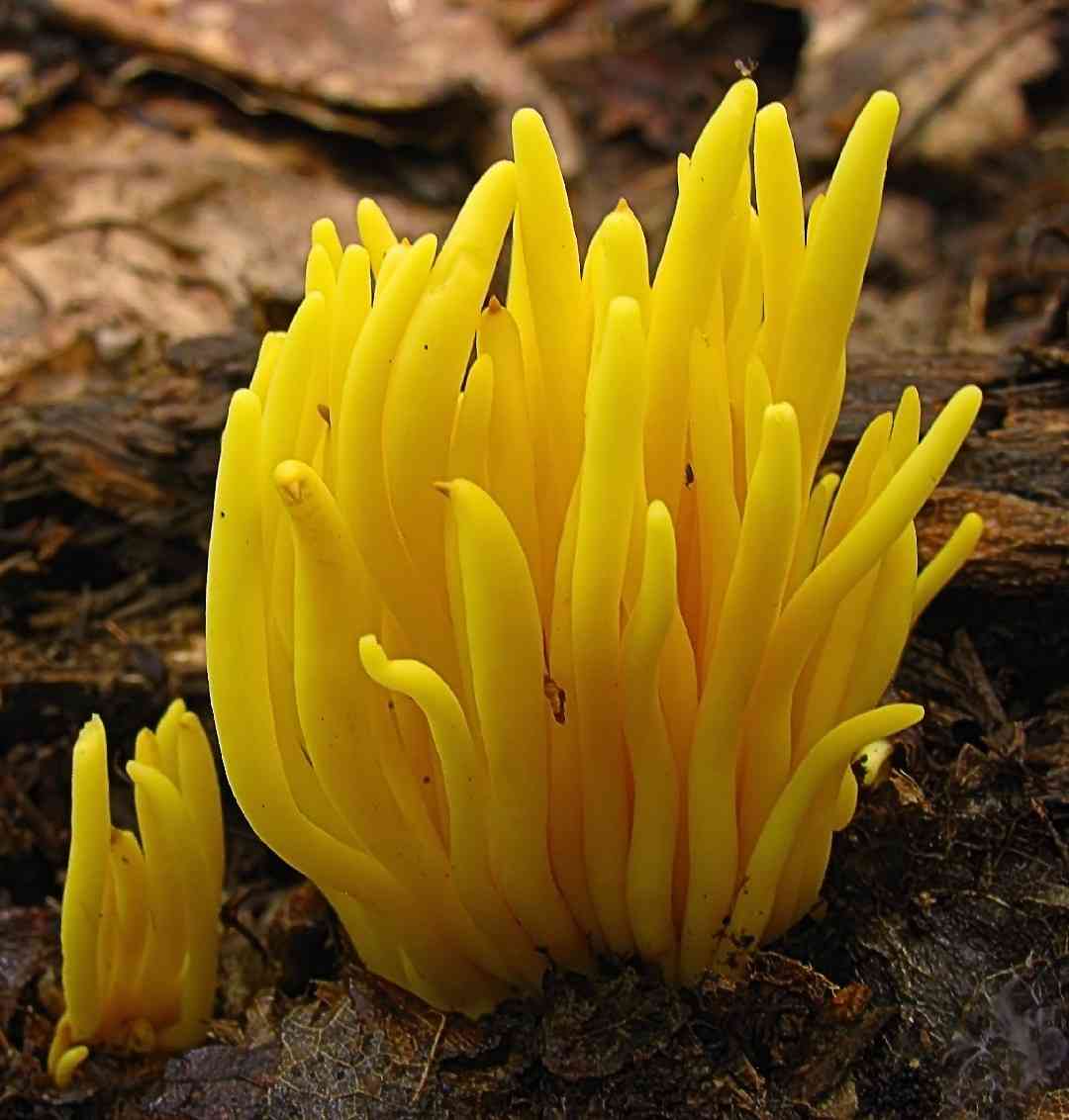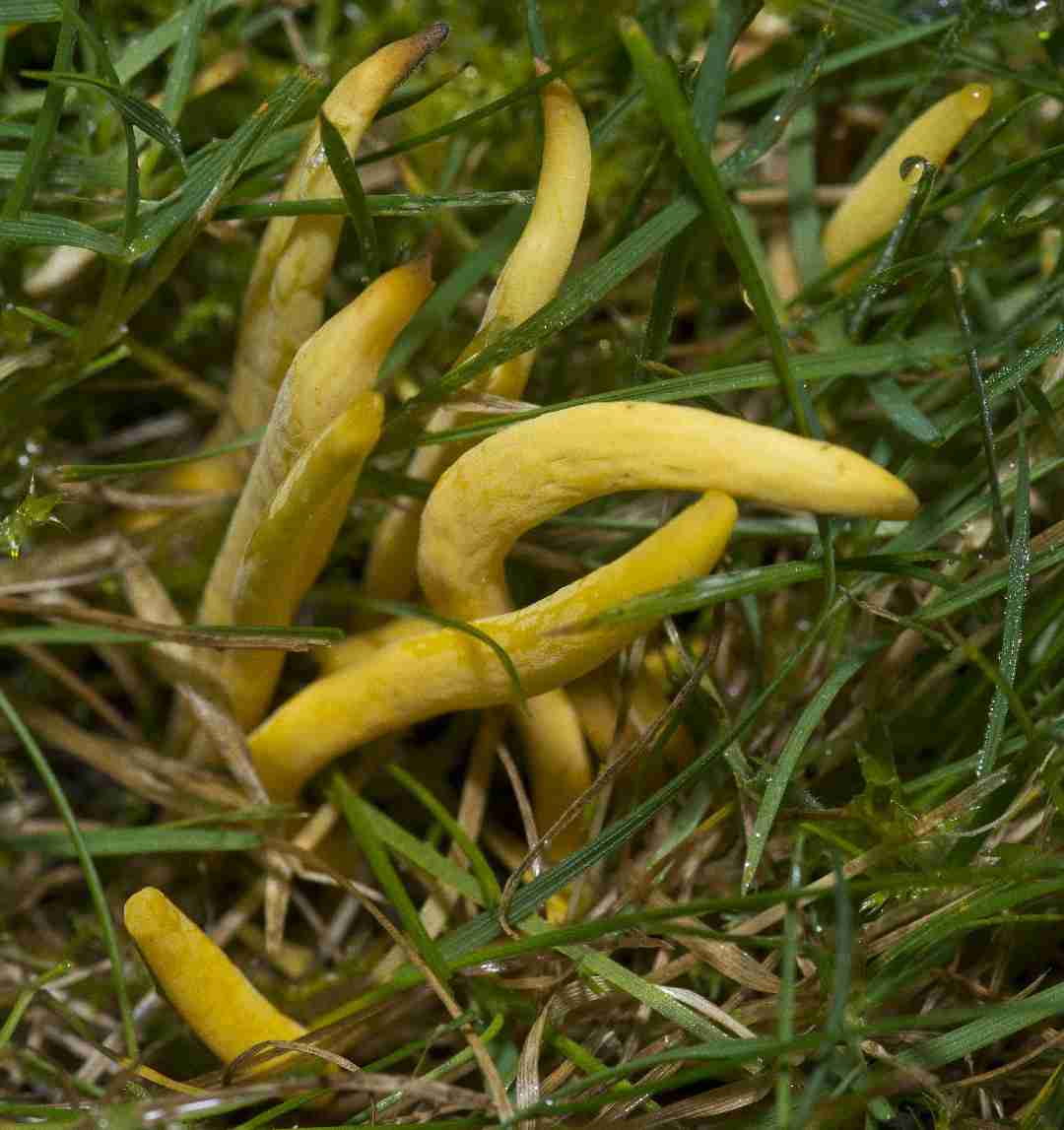
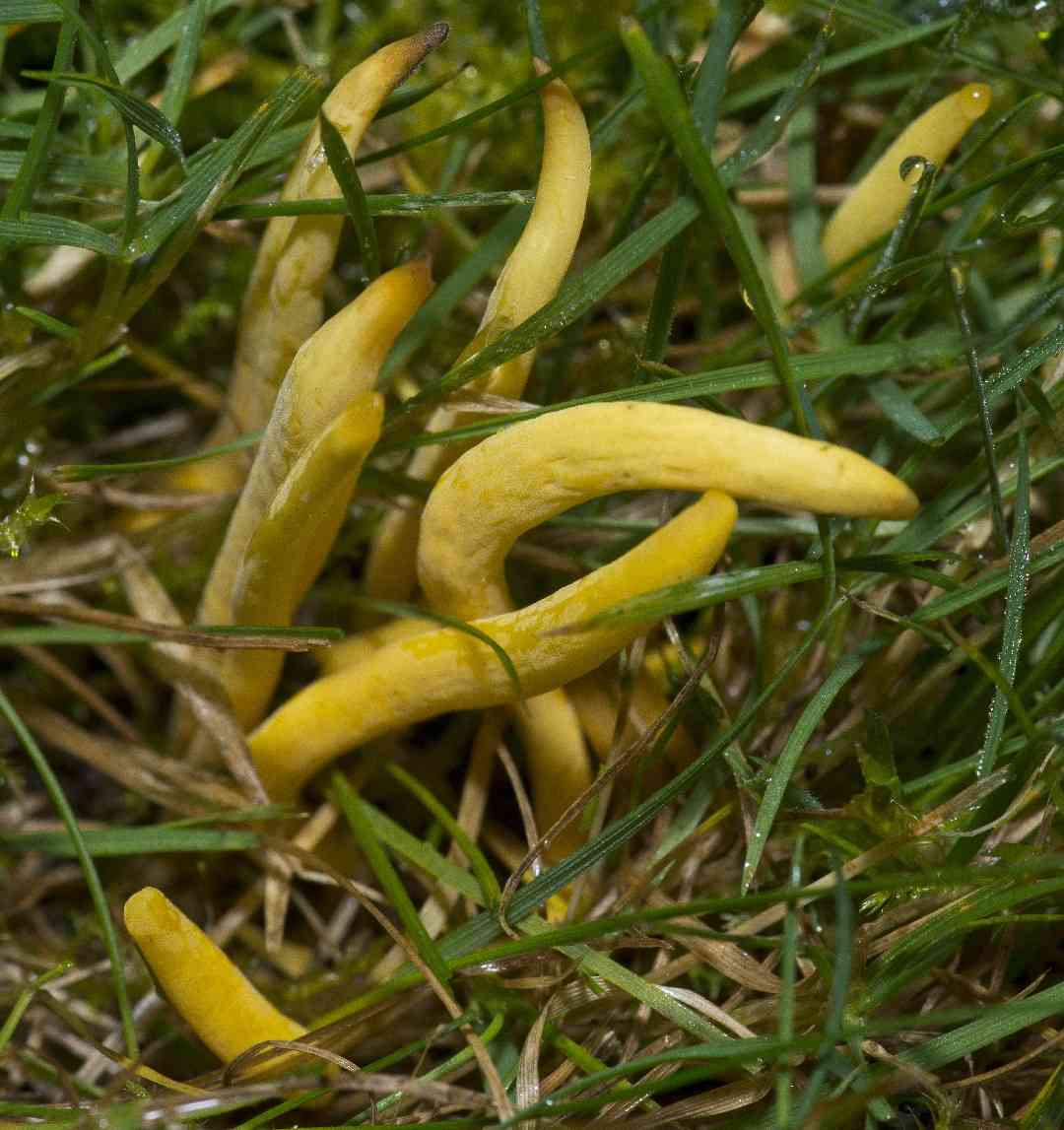
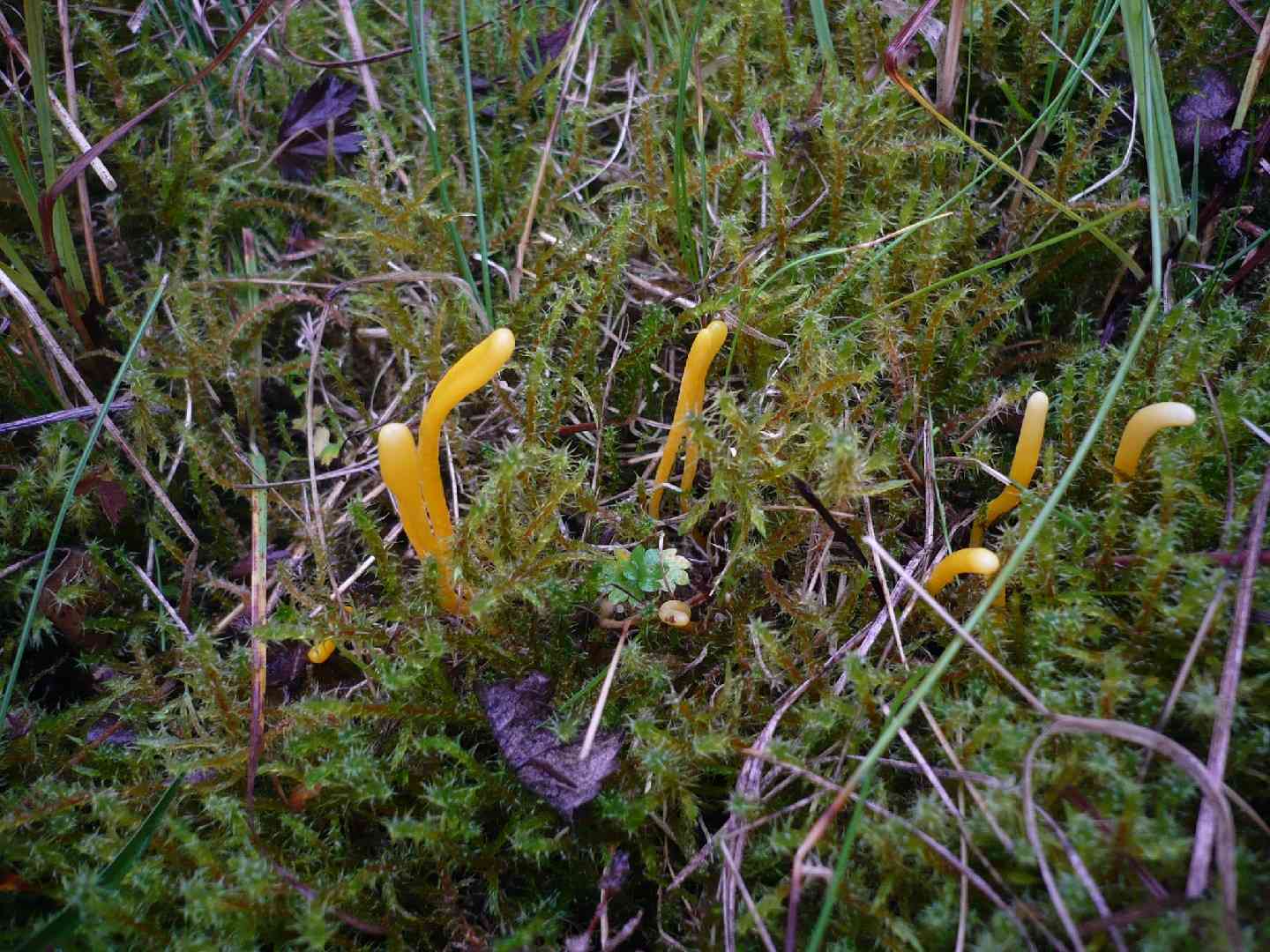
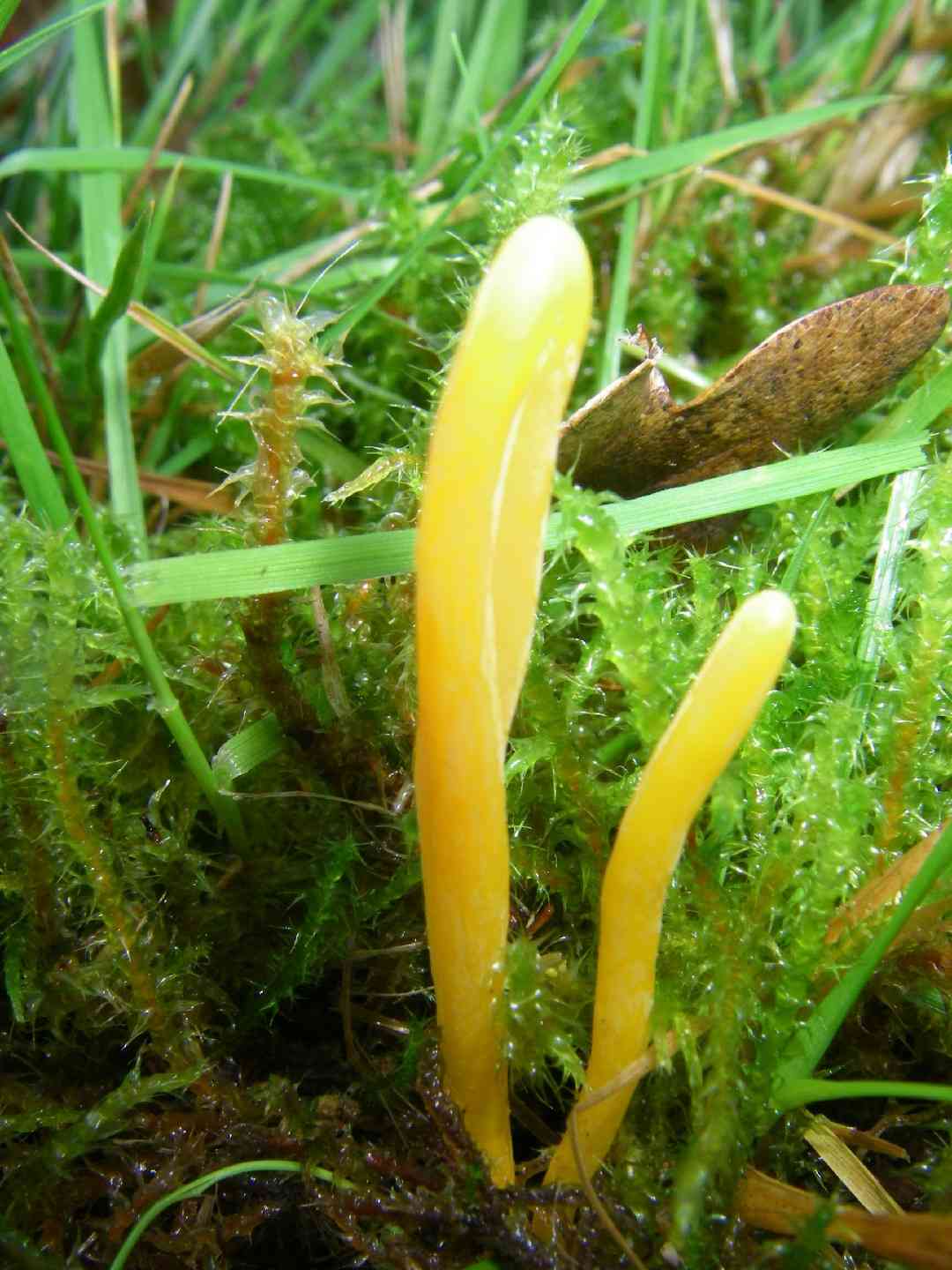
Yellow club
Clavulinopsis helvola
A species of Clavulinopsis.
The Yellow club mushroom is notable for its vivid yellow, club-shaped fruiting structures, commonly found in grassy habitats. These fungi tend to grow in groups, frequently appearing close together. Their striking color, smooth texture, and thin, pointed ends make them quite distinctive. They play a role in the environment by breaking down dead organic material.
In This Article
Attributes of Yellow club
Height
3 - 7 cm
Flesh
Brittle; white, yellowish
Ring
Ringless
Spore Print Color
White
Odor
Faint, non-distinctive fungal scent.
Body Color
YellowOrange
Flesh Bruises
The flesh or milk does not discolor when bruised or cut.
Growth Form
Scattered, Gregarious
Nutrient Gathering
Mycorrhizal
Substrate
On soil
You can find Yellow club by these plants
Pines, Spruces, Oaks, European beech
Species Status
Fairly common and widespread
Endangered Species
No
Scientific Classification of Yellow club
Phylum
Club fungi
Class
Mushroom-forming fungi
Order
Gilled fungi
Family
Coral fungi
Genus
Clavulinopsis
Toxicity and Edibility of Yellow club
Is Yellow club Toxic?
Toxicity information is not available for this mushroom. Always consult with an expert before consuming any wild mushrooms.
